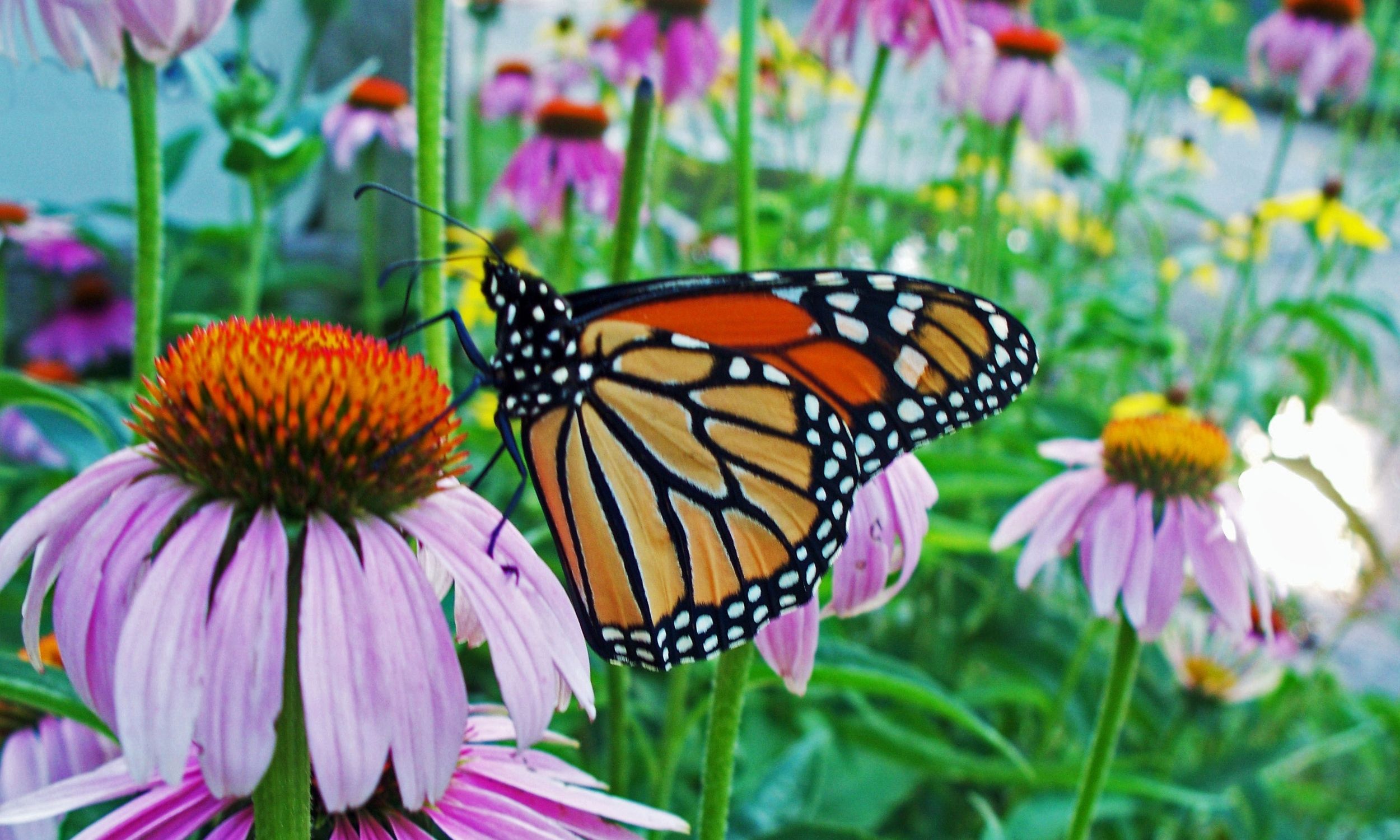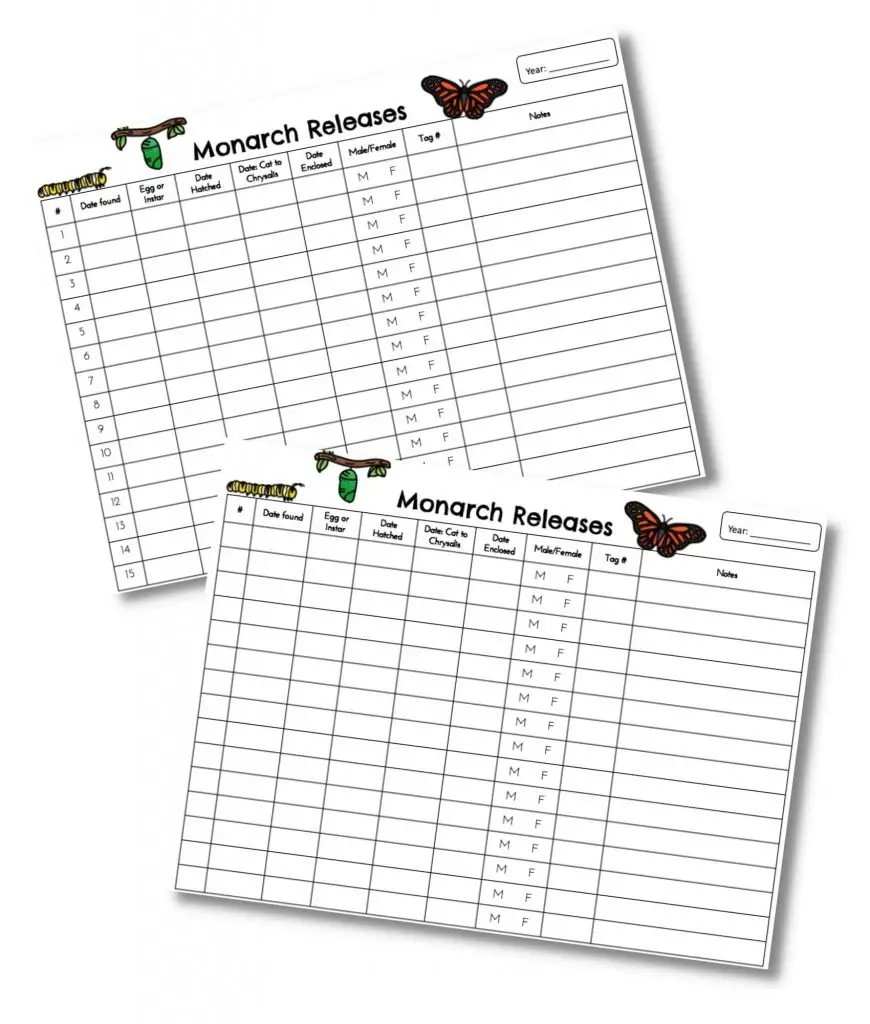How to Create a Monarch Waystation
This year, I’ve registered my garden as a certified Monarch Waystation, through MonarchWatch.org. I’m pretty excited about this. Read on to find out How You Can Create a Monarch Waystation too!
Disclosure: Some of the links below are affiliate links, meaning, at no additional cost to you, I will earn a commission if you click through and make a purchase.
What is a Monarch Waystation?
A Monarch Waystation is an intentionally-managed garden that provides food and habitat for the struggling Monarch butterfly population. As a rule, a waystation must include at least 2 types of Milkweed, the ‘host’ plant for Monarchs. As a Monarch Waystation, my garden has met the criteria for providing food, shelter, and breeding grounds for Monarch butterflies and that my gardening practices have proven sustainable enough to continue supporting Monarchs into the future.
Planning Your Monarch Waystation
A Monarch Waystation has to meet several criteria in order to be registered, but luckily for small-space gardens, size is not a very big hurdle. While your Monarch plants must be sited in plenty of sunlight (which butterflies thrive on) the overall size of your plantings need only be 100 square feet total.

You’ll be asked to fill out a form accounting for how well your garden performs in the following categories:
Host Plants
A butterfly host plant is the place where butterflies lay their eggs for the next generation. Host plants also act as the sole food source for the developing caterpillars, so that they can become strong, healthy butterflies.
Monarchs exclusively rely on Milkweed as their host plant. There are several different varieties of milkweed, including Common Milkweed, Butterfly Weed, Swamp Milkweed, Whorled Milkweed, and Tropical Milkweed.
A certified Monarch Waystation must have a minimum of 10 milkweed plants, made up of at least two different varieties.
Planting multiple varieties of milkweed, which often have varying bloom times, helps to prolong the time frame that Monarch butterflies can make use of your waystation.
Milkweed and Butterfly Weed are two varieties of the same plant, and are both members of the genus Asclepias. Butterfly Weed is the only Milkweed that goes by a different name!

Nectar Plants
While host plants are food sources for caterpillars, nectar plants are food for fully-developed butterflies. Recent research suggests that a lack of nectar plants may be playing a bigger part in the decline of Monarchs than previously realized.
Annual plants, which bloom quickly but don’t return for a second season, play a crucial role in a Monarch Waystation. Examples include: Gaillardia, Cosmos, Marigold, Verbena, Zinnia and more.
Perennials, which are slower to establish when first planted, but survive and thrive in subsequent seasons, are also important additions to a Monarch garden. Examples include: Bee Balm, Black Eyed Susan, Coreopsis, Hollyhock, Echinacea and more.
Early and late-season bloomers. Be sure to plant varieties that will provide food for Monarchs at the extreme ends of your gardening season. For example, I’ve allowed a large block of Goldenrod to naturalize in my garden, which provides food for many pollinators (including Monarchs) late into the fall, when other flowers have faded.
Learn More About What to Plant For Your Monarch’s by visiting – What to Plant for Monarch’s
Keep Track of ALL your Monarchs
Once you start raising Monarchs you will be hooked and have HUNDREDS!! Use our FREE Monarch Recording Charts to help you keep track of them all.

Sustainable Gardening Practices
While providing habitat and food for Monarchs is a great focus all on its own, we also want to be sure as gardeners that our big-picture practices are aligned with the overall protection of these pollinators. Monarch Watch does a great job of reminding us that how we do things in the garden really matters.
Elimination of pesticides.
This can be a tough one for everyone to get on board with, especially if you’re experiencing a particularly horrific bug infestation. But as butterfly-lovers, we do need to develop an awareness that many insecticides are designed to kill a wide range of pests – pollinators included!
Thinning, dividing, mulching, and watering.
You’ll need to provide some information about how actively you care for your plants. Practices such as weeding, thinning, and watering ensure that your plants are at their best and are capable of producing high-quality blooms for your visiting Monarchs.
Removing Dead Stalks.
This one really made me think! Because of the declining bee population, I’ve been following the advice to leave dead plant growth in-place throughout the winter, in order to provide habitat for all kinds of bugs, big and small. I can only assume that removing dead stalks has to do with limiting the spread of disease among developing caterpillars. For me, the jury’s still out until I can dig a little deeper and weigh all of the pros and cons around this idea.
Certifying Your Monarch Waystation
Now that you know what will be required of your garden to become a certified Monarch Waystation, you’re welcome to register your site. To do this, you can visit MonarchWatch.org and download a print form to mail in or fax, or you can fill out your form online.
Benefits and Extras of Certifying Your Monarch Waystation
For just a little bit extra, you can get a cool sign to hang in your garden! You can even choose a fun name for your site, which will be printed on the sign.
You’ll receive an official Certificate of Appreciation. Mine lists my Monarch Waystation as number 13582.
Your garden will be listed on the interactive online map, along with all of the other Certified Monarch Waystations in the US.
If you pay just a little bit extra, you’ll be sent a sign to post, making your Certified Monarch Waystation official!
